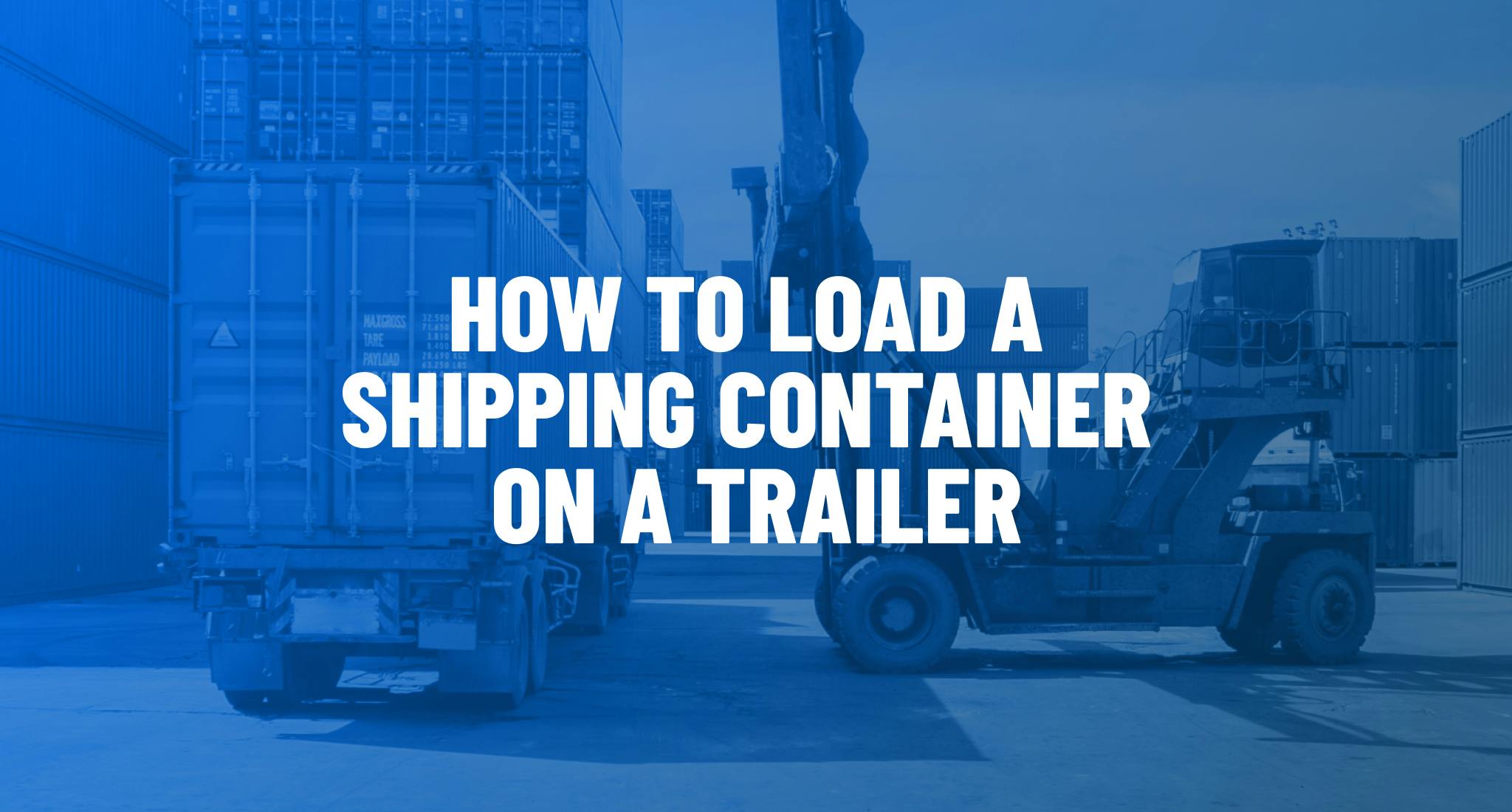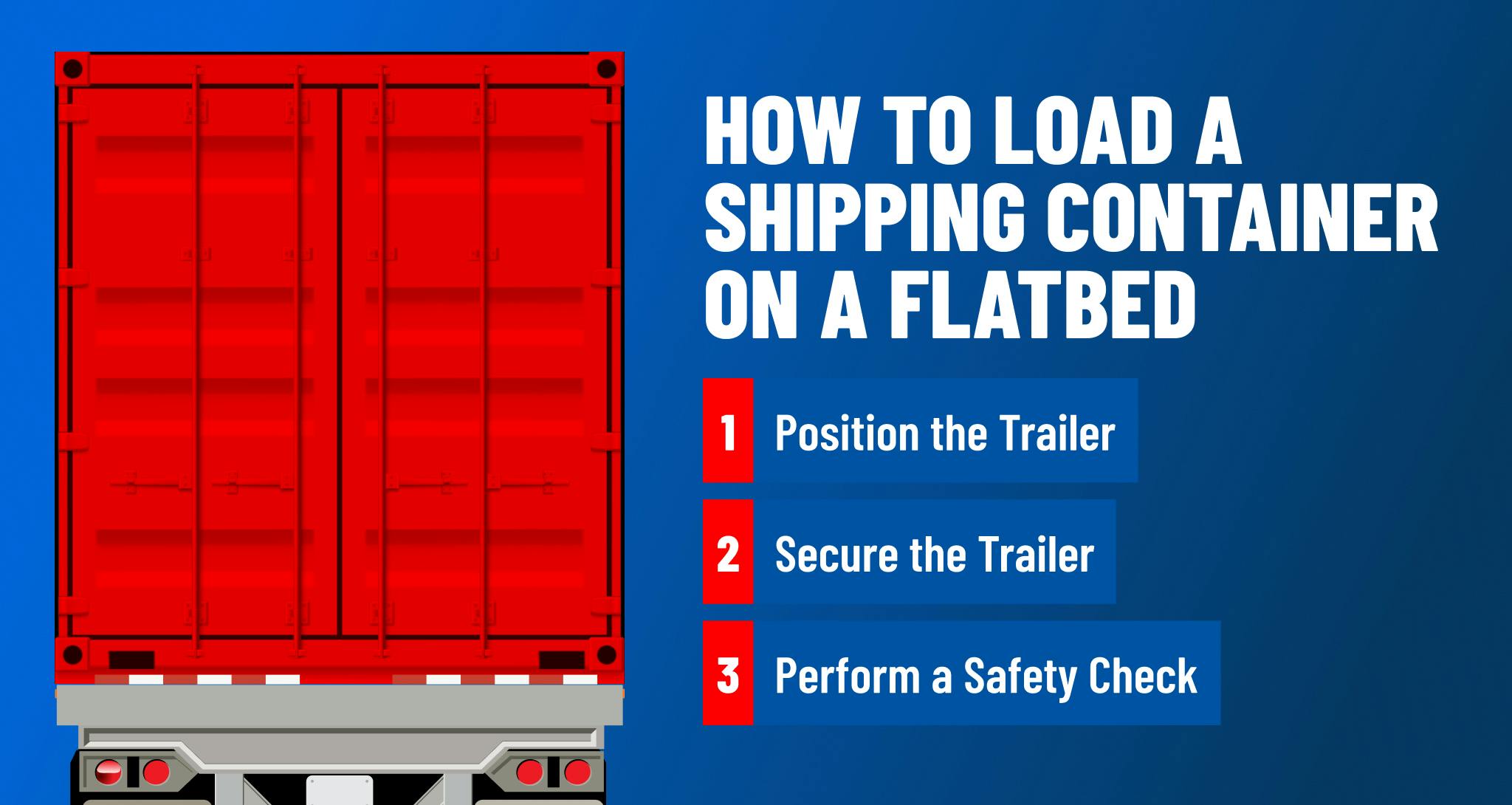How to Load a Shipping Container onto a Trailer
January 16th, 2024

Loading a shipping container onto a trailer is a crucial step in moving goods. It requires careful attention to safety and detail. This process is more than just transferring a container; it’s about making sure everything inside gets to its destination safely.
This guide covers the important steps of putting a shipping container on a trailer. We’ll go over everything from getting the equipment ready, to making sure the container is securely attached. Whether you’re just starting or want to improve your skills, this guide will help you load containers safely and accurately.
What is a Shipping Container?
A shipping container is a standardized, sturdy box used for transporting goods across the globe. Made primarily from steel, these containers are designed to withstand harsh conditions, including long sea voyages and heavy handling at ports. Their uniform size and shape make them ideal for efficient stacking and handling, revolutionizing the way goods move around the world.
Shipping containers come in various sizes, with the most common being 20-foot and 40-foot lengths. They provide a secure, weatherproof environment for a wide range of cargo, from electronics to bulk commodities. The versatility and durability of shipping containers have made them indispensable in the global trade network, ensuring that products reach their destinations safely and efficiently.
The Importance of Properly Loading a Shipping Container on a Trailer
Properly loading a shipping container onto a trailer is crucial for safe and efficient transportation. It ensures that the cargo inside remains secure and undamaged during transit while also maintaining the trailer’s balance. This reduces the risk of accidents and ensures the safety of the driver and other motorists.
Loading a container properly also maximizes the space used during transport and allows for more goods to be transported in a single trip. Using shipping space efficiently not only cuts down on transportation costs but also reduces the environmental impact of shipping.
In the logistics world, where time and space are money, mastering the art of loading a shipping container is an essential skill for any logistics professional.
How to Load a Shipping Container on a Flatbed Trailer

Loading a shipping container onto a flatbed trailer is a task that requires precision and safety. It involves several steps to ensure that the container is transported securely. Here’s a step-by-step guide to help you through the process:
Positioning the Trailer
- First, line up the trailer directly with the container. This straight approach makes loading easier.
- Make sure the trailer is parked on flat, stable ground to prevent any tilting.
- Leave enough room around the trailer for forklifts or cranes to maneuver.
- Look out for overhead obstacles like wires or tree branches that could interfere with the loading.
Secure the Trailer
- Apply the trailer’s brakes firmly to keep it from moving.
- Place wheel chocks under the tires for extra stability.
- Check the trailer bed for any damage or debris that might cause problems.
- Use a crane or forklift to secure the shipping container in place
- Make sure the locking pins on the trailer are set and ready to secure the container.
Perform a Safety Check
- Confirm that the container’s weight is within the trailer’s carrying capacity.
- Inspect the container carefully for any structural issues.
- Check the condition of your forklift, crane, or other loading equipment.
- Ensure that all personnel are safely out of the loading area before you begin.
Following these steps will help ensure that your shipping container is loaded onto the flatbed trailer safely and efficiently.
Safety Checks: Why Perform Safety Checks?
Safety checks are vital in loading shipping containers onto trailers, as they ensure the safety of the cargo, personnel, and other drivers on the road. Here are 7 items to look out for before loading your next shipment:
- Container Inspection: Check for any structural damage, corrosion, or compromised seals that could affect the integrity of the container.
- Trailer Condition: Verify the condition of the trailer, including brakes, lights, and locking mechanisms, to ensure they are functioning correctly.
- Loading Equipment: Ensure that cranes, forklifts, or other loading equipment are in good working order and suitable for the weight and dimensions of the container.
- Securing Devices: Inspect chains, straps, and other securing devices for wear and tear or damage, and confirm they are adequate for securing the container.
- Alignment and Positioning: Check the alignment of the container on the trailer to ensure it is centered and balanced for safe transportation.
- Documentation and Labels: Review all necessary transportation and cargo documentation, and ensure that labels and placards are correctly displayed and legible.
- Weather and Environmental Conditions: Assess the weather and environmental conditions, as they can impact the safety of the loading process.
General Tips for Loading a Shipping Container
Loading a shipping container requires a bit of strategic planning and artistry to maximize space and ensure cargo safety. It’s crucial to distribute weight evenly, secure items properly, and consider the type of goods being transported. Here are some general tips to maximize your next load’s efficiency:
- Even Weight Distribution: Balance the weight throughout the container to prevent shifting during transit, focusing on even distribution across the container’s floor.
- Block and Brace Method: Use blocking and bracing techniques to immobilize cargo, preventing movement and potential damage.
- Stacking Strategy: Stack items carefully, placing heavier boxes at the bottom and lighter ones on top, while avoiding stacking fragile items under heavy goods.
- Utilize All Space: Maximize space by filling gaps with dunnage or smaller items, ensuring no wasted space and additional cargo stability.
- Load Securing Equipment: Employ straps, nets, and bars to secure items, especially for mixed or irregularly shaped cargo.
- Consider Cargo Type: Adapt loading patterns based on the nature of the goods, such as perishables, liquids, or fragile items, to ensure their integrity.
- Accessibility for Unloading: Arrange items considering the unloading process, ensuring easy access to essential items or those needed first upon arrival.
- Labeling and Documentation: Clearly label all items and ensure that loading documentation matches the actual cargo for smooth customs and unloading processes.
FAQ
How are shipping containers loaded onto trucks?
Large cranes or forklifts load shipping containers onto trucks. Operators skillfully lift and place the container onto the truck’s flatbed, ensuring secure alignment. This process demands precision and expertise to manage the heavy load.
How do you secure a container to a trailer?
To secure a container to a trailer, operators use twist locks or locking pins at each container corner. These locks fit into corresponding fittings on the trailer, stabilizing the container during transport. Regular checks and maintenance of these locks are essential for safety.
Do shipping containers charge by weight?
Shipping container costs typically depend on size and shipment distance, not weight. However, for heavy or oversized loads, weight can influence costs due to special handling needs. When estimating shipping costs, considering both cargo size and weight is important.
Learn More with Hale Trailer
Whether you’re moving cargo around the corner or across the country, Hale Trailer is your partner for all shipping and logistics needs. Browse our extensive online inventory or drop by one of our locations to connect with one of our experts. If you’re interested in learning more about the fascinating field of shipping and logistics, browse our blog for in-depth explainers, current trends, and the latest in shipping equipment.
All the information on this website – https://www.haletrailer.com – is published in good faith and for general information purposes only. Hale Trailer Brake and Wheel does not make any warranties about the completeness, reliability and accuracy of this information. Any action you take upon the information you find on this website, is strictly at your own risk. Hale Trailer Brake and Wheel will not be liable for any losses and/or damages in connection with the use of our website.
